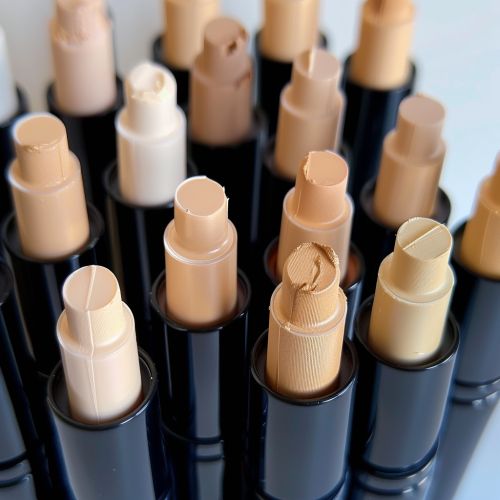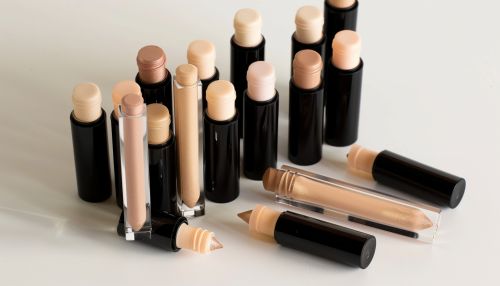Concealer
Overview
Concealer, also known as a concealer stick, is a type of cosmetic that is used to mask dark circles, age spots, large pores, and other small blemishes visible on the skin. It is similar to foundation, but it is thicker and hides different pigments by blending the imperfection into the surrounding skin tone. It is normally applied after foundation and before setting powder to create a smooth and flawless complexion.


History
The use of cosmetics to conceal imperfections dates back to ancient times. The ancient Egyptians, for instance, used a type of concealer to hide blemishes and imperfections. In the 20th century, the popularity of concealer grew as the film and television industries developed. The need for actors and actresses to have flawless skin on screen led to the development of more advanced and effective concealers.
Types of Concealers
There are several types of concealers, each with its own unique properties and uses. These include:
- Liquid Concealer: This is the most versatile type of concealer, as it works for all skin types. It's available in various finishes including matte, satin, and shimmer.
- Stick Concealer: This type is generally solid and comes in a lipstick-like tube. It's best for normal, dry, sensitive, and combination skin types.
- Cream Concealer: This type comes in compact or pot forms. It's best for normal, dry, combination, and sensitive skin types.
- Cream-to-Powder Concealer: This type starts as a cream but turns into a powder after application. It's best for normal, combination, and oily skin types.
- Color-Correcting Concealer: This type comes in various colors to correct different skin issues. For example, green concealer is used to neutralize redness, peach to neutralize dark circles, and yellow to hide veins and bruises.
Application Techniques
The application of concealer can greatly affect its effectiveness. Here are some techniques to apply concealer properly:
- Under the Eyes: To conceal dark circles under the eyes, apply concealer in an upside-down triangle shape with the base under your eye and the point towards your cheek. This technique not only conceals dark circles, but it also instantly creates the illusion that your face is lifted.
- On Blemishes: For blemishes, it's best to use a pointed brush to apply the concealer precisely on the spot and then blend it outwards to blend with the skin.
- Around the Nose: If you have redness around your nose, apply concealer around the corners and crevices where the redness is most prominent.
- On Dark Spots and Pigmentation: For dark spots and pigmentation, apply a color-correcting concealer first to neutralize the color of the spot, then apply a concealer that matches your skin tone.
Choosing the Right Concealer
Choosing the right concealer depends on what you want to conceal, your skin type, and your skin tone. Here are some tips to choose the right concealer:
- For Dark Circles: Choose a concealer that's one or two shades lighter than your skin tone to brighten the under-eye area.
- For Blemishes: Choose a concealer that matches your skin tone exactly to avoid drawing attention to the blemish.
- For Redness: Choose a green color-correcting concealer to neutralize the redness.
- For Dark Spots: Choose a peach or orange color-correcting concealer to neutralize the dark color.
Safety and Precautions
While concealers are generally safe to use, some people may experience allergic reactions or breakouts. It's always recommended to do a patch test before applying a new product to the face. Also, always make sure to remove all makeup before going to bed to prevent clogged pores and breakouts.
